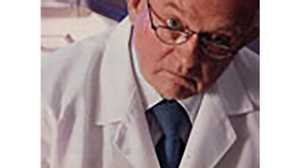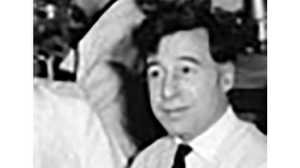Howard and Georgeanna Jones

Caring pioneers and “grandparents” to thousands, Drs. Howard and Georgeanna Jones postponed their retirement to open an in vitro fertilization (IVF) clinic in Virginia and ended up presiding over the birth of America’s first test tube baby.
Fertility Experts
Howard and Georgeanna Jones were born and raised in Baltimore to families who knew each other right from the start; Georgeanna’s father was the obstetrician who delivered Howard. They followed her father into the medical field, working together at Johns Hopkins for a combined total of 85 years. Georgeanna was a reproductive endocrinologist who specialized in non-surgical treatments for infertility, while Howard handled surgical treatments.
First IVF Work
The Joneses’ first exposure to the possibilities of IVF came in the person of English scientist Robert Edwards, who arrived at Johns Hopkins in July 1965 and met the Joneses on his very first day. Edwards had achieved IVF in mouse eggs and wanted to duplicate the success with humans; Howard and Georgeanna were willing to help. That summer the Jones family pitched in; Howard obtained parts of ovaries for Edwards to use; Howard’s daughter (who volunteered as a surgical technician) ferried the tissue over to Edwards’ lab; and during breaks from work, they entertained Edwards and taught him how to eat Maryland crabs. Together they may have achieved a successful, albeit limited, fertilization of human eggs in a laboratory petri dish, although they would not fully realize it until years later. When the summer ended, Edwards went back to England. They kept in touch over the years, Howard Jones rising to Edwards’ defense at a biomedical ethics conference held in 1971. But the Joneses left the IVF work to Edwards and his colleague Patrick Steptoe, focusing on other medical issues instead. Georgeanna was further distinguished by becoming the first woman president of the American Fertility Society in 1970.
Retirement?
In the 1970s Johns Hopkins required its doctors to retire at age 65; because Howard and Georgeanna shared an office, they let him stay on for two additional years until she reached retirement age. When that happened, the Joneses faced the question of what to do next: retire from medicine completely or continue working? In Howard’s words, “we consulted our children. And we have three children, and they unanimously voted that we should go fishing, which they know we like to do.” But then came a phone call from an old friend at the fledgling Eastern Virginia Medical School in Norfolk, asking them to help get things started. As it turned out, they would stay in Norfolk for almost 30 years.
Creating a Clinic
Howard and Georgeanna arrived in Norfolk on the day the world’s first test baby, Louise Brown was born in England, and the first visit they received at their new house was from a reporter asking if test tube babies were possible in America. “Sure,” Howard replied flippantly, “all we need is money.” To his surprise, when the article was published, a former patient of Georgeanna called up and said, “I see by the paper you need some money. How much do you need?” What would become the Jones Institute for Reproductive Medicine was planned in an impromptu conference on a bunch of still-packed boxes in the Jones’ living room. When word got out that IVF would be attempted at the clinic, opponents of the procedure forced a series of contentious, hours-long meetings before the necessary regulatory approval was received. The clinic’s opening on March 1, 1980 was big news. And the Joneses got down to the business of trying to achieve America’s first test tube baby.
Success
The Joneses were besieged by people wanting to be treated at their clinic — so much so that the friend who had brought them to Norfolk bought, with his own money, the first answering machine that Howard had ever seen just to handle all the calls. During 1980, however, the Joneses were unable to achieve a single IVF pregnancy. They had been following methods suggested by Edwards, but when those didn’t work, Georgeanna decided to put the patients on strong fertility drugs so they would produce more eggs. The process was so new that researchers everywhere were still largely in the dark about how to make it work. In the spring of 1981, while the Joneses were attending a conference in Paris, they learned of the clinic’s first pregnancy, which they celebrated with a lavish $50 meal. That December, their patient Judy Carr gave birth to Elizabeth, America’s first test tube baby, just before Howard’s 71st birthday.
A Large Legacy
The Jones Institute would go on to help nearly 3,000 children be born, and Howard worked there into his nineties. Georgeanna developed Alzheimer’s Disease and died in March 2005. In a sentiment doubtless echoed by thousands of the Joneses’ patients, Elizabeth Carr wrote that Georgeanna played down the science whenever she talked to her about IVF, because she “wanted me to know how lucky I was: I had parents who wanted a child so badly that they would go through something risky. She emphasized that I wasn’t special because of technology, but because I was my parents’ child.”







